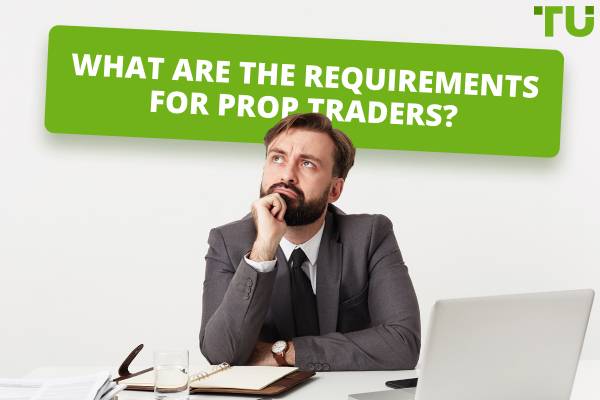Prop Trading Challenge: How Does It Work?
Prop trading challenge is a contest organized by proprietary trading firms with the aim of further allocation of the capital to those traders, who successfully pass the challenge and meet specified parameters of profit target and risk.
A prop trading challenge is a rigorous assessment used by proprietary trading firms to evaluate a trader’s skills. It consists of meeting specific profit targets within predetermined risk parameters.
Despite the difficulty of passing the challenge, traders can still earn significant profits.
In this article, we will explore the basics of prop trading challenges and the factors to consider when choosing the right proprietary trading firm.
Fund your account with Topstep!Prop trading challenge explained
A prop trading challenge is a rigorous evaluation of a trader’s skills and strategies that is designed to determine if they are suitable for a proprietary trading firm. These challenges involve meeting profit targets within specified risk parameters and can vary in difficulty based on individual experience and skills. Learn about the best prop firm contests that provide a platform for traders to demonstrate their trading skills and strategies in real market conditions.
Passing a prop trading challenge can be difficult due to the high standards set by firms, making effective trading strategies and risk management skills crucial for success.
Potential participants include:
-
Aspiring traders interested in algorithmic or quantitative strategies. The challenges provide a way to practice and showcase these skills
-
Students and professionals looking to transition careers, The challenges serve as a valuable hands-on learning opportunity and networking event with prop trading firms
-
Experienced traders seeking to be recruited by institutional firms. The challenges essentially serve as tryouts to earn a full-time trading position
Related terms for beginners
Building on the previous discussion, in order to understand the fundamentals of prop trading challenges, it is essential for beginners to become familiar with related terms such as margin, algorithmic trading, swing trading, and drawdown.
-
Margin is the collateral that a customer deposits with a broker when using borrowed funds to purchase assets. The margin deposit acts as security for the loan taken from the broker to buy a financial instrument. Specifically, margin is the difference between the total value of assets held in a margin account and the loan amount from the broker
-
Algorithmic trading is the use of computer algorithms and quantitative models to automate the execution of trade orders
-
Swing trading is a type of short to medium term trading that attempts to capitalize on price movements over a few days or a few weeks
-
Drawdown is a decrease in trading capital after a series of losing trades
How does prop trading challenge work?
Participants of the prop trading challenges usually go through the following stages:
-
Application Process. Interested traders fill out an application with details of their trading experience and skills. Firms screen applicants to identify promising candidates. Sometimes a separate qualification test is held
-
Virtual Trading Account. Participants get access to a demo account or paper trading account with virtual funds provided by the prop firm. They also receive the rules, account parameters, evaluation metrics, and timeline
-
Trading Period. Over the challenge duration (usually 1-3 months) traders implement their strategies to grow the virtual account balance. Some challenges allow trading stocks, futures, Forex or other asset classes
-
Performance Evaluation. Leaderboards track trader performance metrics like PNL, risk-adjusted returns, win rate, etc. Results are verified to prevent cheating
-
Review & Selection. At the end, prop firms analyze the trading data to shortlist top performers for interviews and further selection
Risk management and continuous learning are key components of a successful prop trading challenge. Position sizing, stop-loss orders, and diversification can help manage risk. Analyzing trades and learning from mistakes is important for improvement. Adapting strategies based on market conditions is necessary in order to maximize profits.
Example of a prop trading challenge
Let’s take Traders With Edge as an example.
Traders With Edge is a proprietary trading firm that offers a comprehensive evaluation program designed to identify skilled and disciplined traders who demonstrate consistency, profitability, and risk management. The Turtle Challenge is a one-phase evaluation program that prepares traders for the funded stage.
The challenge has a participation fee of $55, and traders have unlimited free retries during the evaluation program. Traders must achieve a specific profit target of 10% while adhering to 5% max drawdown of initial capital and 2.5% max daily drawdown of equity.
Traders can use EAs and news trading, and weekend holding is allowed.
Once you pass the evaluation or challenge account, you can trade with a funded account.
If you are interested in other prop trading challanges feel free to read our article about Best Prop Firms With Challenge.
Best Prop trading firms
FAQs
Is prior trading experience required to participate in prop trading challenges?
While prior trading experience can be advantageous, it's not always a prerequisite to participate in prop trading challenges, as many firms offer training programs and seek raw talent with strong analytical and decision-making skills.
Are there any risks associated with participating in a prop trading challenge?
The primary risk in participating in a prop trading challenge is financial loss, as some challenges may require an entry fee or trading with real capital, and the volatile nature of markets means there's potential for loss; however, many challenges are conducted via simulators with no monetary risk.
How do prop firms benefit from these challenges?
Prop firms benefit from these challenges by identifying skilled traders who can potentially generate significant profits for the firm; it's a way to assess a participant's trading strategy, risk management, and ability to handle stress before offering them actual capital to trade.
What are the success rates of prop trading challenges?
Success rates of prop trading challenges can vary widely and are often not publicly disclosed; however, they are generally low, as the challenges are designed to identify the very best traders from among many participants, often in highly competitive settings.
Glossary for novice traders
-
1
CFD
CFD is a contract between an investor/trader and seller that demonstrates that the trader will need to pay the price difference between the current value of the asset and its value at the time of contract to the seller.
-
2
Investor
An investor is an individual, who invests money in an asset with the expectation that its value would appreciate in the future. The asset can be anything, including a bond, debenture, mutual fund, equity, gold, silver, exchange-traded funds (ETFs), and real-estate property.
-
3
Paper trading
Paper trading, also known as virtual trading or simulated trading, is a practice where individuals or traders simulate real-life trading scenarios without using real money. Instead of placing actual trades with real capital, participants use a simulated trading platform or keep track of their trades on paper or electronically to record their buying and selling decisions.
-
4
Cryptocurrency
Cryptocurrency is a type of digital or virtual currency that relies on cryptography for security. Unlike traditional currencies issued by governments (fiat currencies), cryptocurrencies operate on decentralized networks, typically based on blockchain technology.
-
5
Futures contract
A futures contract is a standardized financial agreement between two parties to buy or sell an underlying asset, such as a commodity, currency, or financial instrument, at a predetermined price on a specified future date. Futures contracts are commonly used in financial markets to hedge against price fluctuations, speculate on future price movements, or gain exposure to various assets.
Team that worked on the article
Vuk stands at the forefront of financial journalism, blending over six years of crypto investing experience with profound insights gained from navigating two bull/bear cycles. A dedicated content writer, Vuk has contributed to a myriad of publications and projects. His journey from an English language graduate to a sought-after voice in finance reflects his passion for demystifying complex financial concepts, making him a helpful guide for both newcomers and seasoned investors.
Dr. BJ Johnson is a PhD in English Language and an editor with over 15 years of experience. He earned his degree in English Language in the U.S and the UK. In 2020, Dr. Johnson joined the Traders Union team. Since then, he has created over 100 exclusive articles and edited over 300 articles of other authors.
Mirjan Hipolito is a journalist and news editor at Traders Union. She is an expert crypto writer with five years of experience in the financial markets. Her specialties are daily market news, price predictions, and Initial Coin Offerings (ICO).














